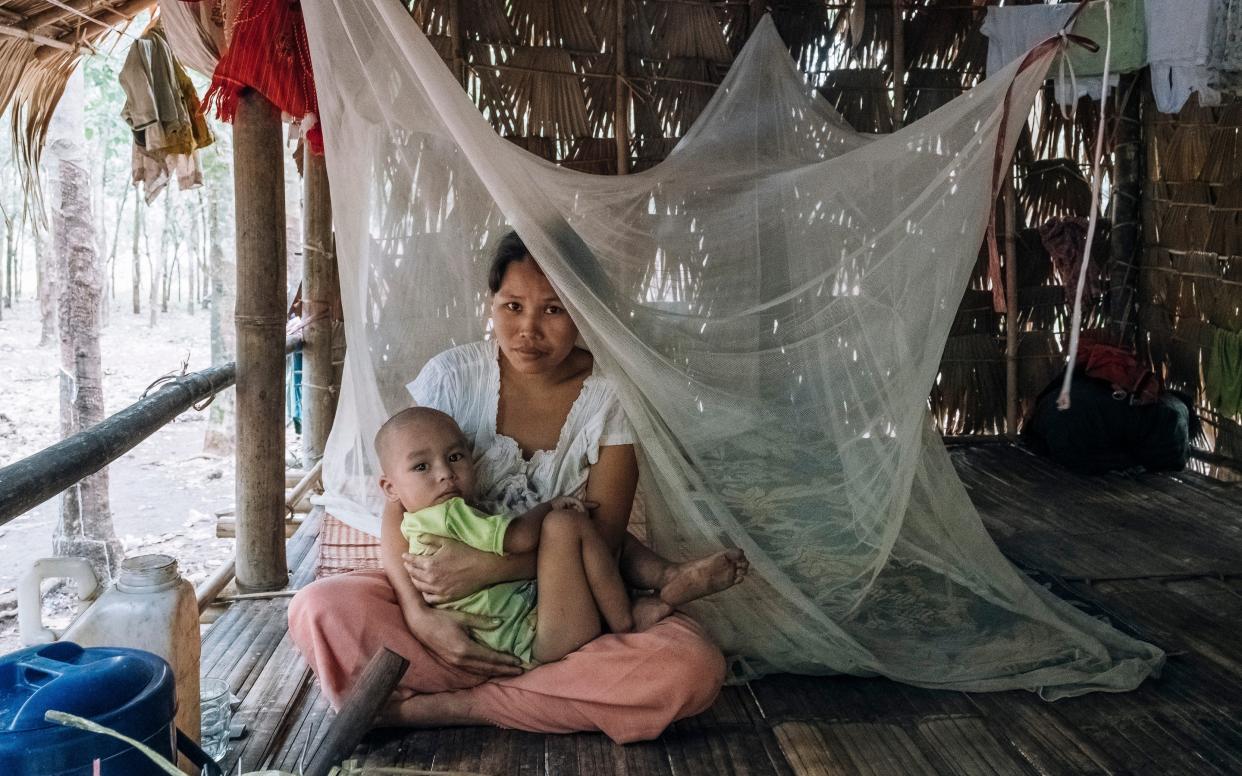Number of cases of malaria still at 'unacceptably high' levels

The number of cases of malaria remain at an “unacceptably high” level, with barely any reduction in the last three years despite a huge global effort to tackle the childhood killer, figures reveal.
The annual World Malaria Report shows that there were 228 million cases of the mosquito-borne disease in 2018, compared to 231 million the year before.
The number of deaths has also shown little movement over the same period - last year malaria killed 405,000 people, two thirds of whom were children under the age of five.
Dr Pedro Alonso, director of the global malaria programme at the World Health Organization, said “exceptional” progress was made in reducing malaria between 2000 and 2015. And he said some countries, including China, El Salvador and Malaysia, were on the verge of being declared malaria free.
But he added: “However, the other half of the malaria endemic world still sustains unacceptably high transmission and infection rates. We need to step up our action, particularly in countries hardest hit by the disease.”

The majority of cases of the disease - 93 per cent - were in sub Saharan Africa with just six countries accounting for more than half of all cases globally: Nigeria (25 per cent of cases), the Democratic Republic of the Congo (12 per cent), Uganda (five per cent) and Côte d'Ivoire, Mozambique and Niger (four per cent each).
Worryingly, Nigeria saw a six per cent increase in the number of cases (3.2 million more cases) and Ghana an eight per cent increase (0.5 million) between 2017 and 2018.
However, Uganda saw a significant reduction in malaria prevalence between 2017 and 2018 - 1.5m fewer cases. India, the Asian country with the largest number of cases, continued its downward trajectory first seen last year, and had 2.6m fewer cases in 2018.
Dr Abdisalan Noor, lead author of this year’s report, said Uganda had pioneered the use of data to ensure that control tools such as bed nets and indoor residual spraying, got to the populations and regions that needed them most.

“They have been using the best possible data to target interventions - they have been at the forefront of this,” he said.
But he added that provisional data for 2019 showed that the number of cases had increased this year so it was too early to claim a complete success.
This year’s report focuses on populations most at risk of the disease - pregnant women and children under five - and it shows that control interventions are being increasingly targeted at these groups, although gaps remain.
In 2018, 11 million pregnant women living in 38 African countries were infected with the disease, which is linked to a greater risk of low birthweight and an increased risk of both neonatal and childhood mortality.
WHO recommends that women receive three doses of intermittent preventive therapy during the course of their pregnancy and the report found that there had been a big increase in the proportion of pregnant women who received this.

The proportion of women receiving the the therapy increased from 22 per cent in 2017 to 31 per cent in 2018 - however, this still leaves more than two thirds of pregnant women without protection.
There have also been big increases in the number of children aged under five sleeping under insecticide treated bed nets - going from 26 per cent in 2010 to 61 per cent in 2018.
However, the report stresses that this means more than a third are still not sleeping under a bed net.
Prompt diagnosis and treatment of malaria is essential to reducing deaths and the report shows that 76 per cent of children with a fever received a diagnostic test in a health centre, compared to 48 per cent over the previous four years.
This increase is due to the introduction of better tests and improvements in public health clinics.

Dr Abdourahmane Diallo, chief executive of the Rollback Malaria Partnership, said the report confirmed what the world already knows.
“Malaria increasingly is a disease of poverty and inequity despite the availability of effective, long-standing interventions. Unfortunately too many of the world’s most vulnerable continue to live at greatest risk of dying from malaria,” he said.
James Whiting, chief executive of Malaria No More, said there were signs of optimism in the fight against the disease, including the introduction of the first ever malaria vaccine in three countries this year, the successful funding round of the Global Fund to Fight Aids, Malaria and Tuberculosis and the launch of next-generation bed nets.

But he added: “The report shows that pregnant women and children in Africa continue to bear the brunt of this epidemic – with children under the age of five accounting for two thirds of global malaria deaths in 2018 – and more than one third of young children in Sub-Saharan Africa still not sleeping under a net.
"Approximately half the world still lives at risk from this preventable and curable disease, which still claims the life of a child every two minutes.”
Protect yourself and your family by learning more about Global Health Security

 Yahoo News
Yahoo News 
